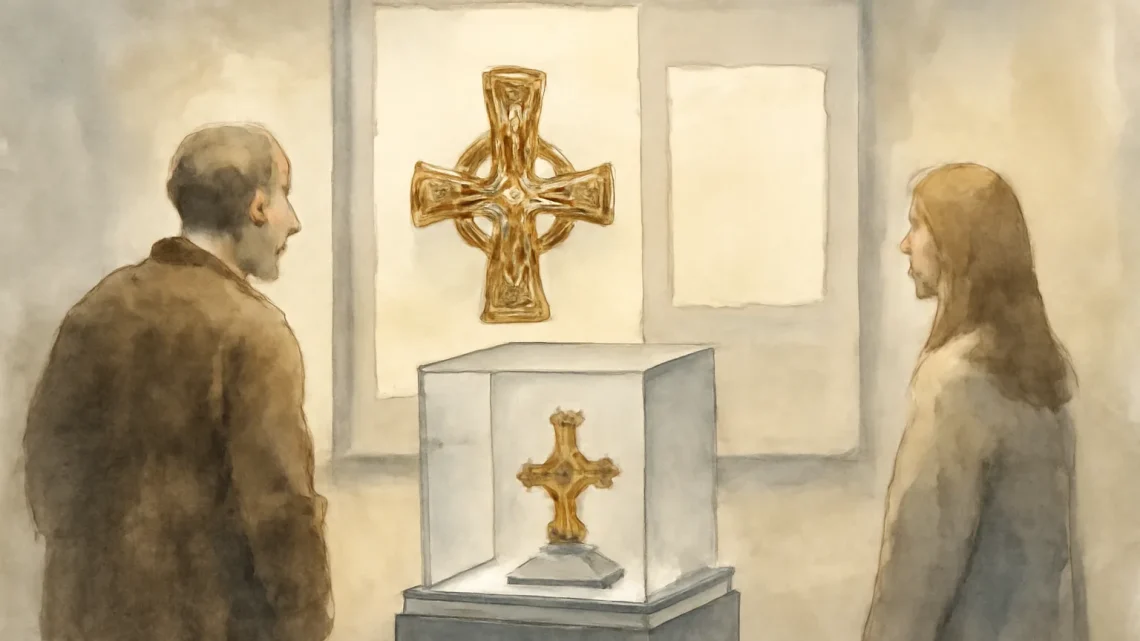
Saxon Pendant Discovery Displayed at Leeds City Museum
November 3, 2025Ancient artefact offers insights into early medieval Leeds
A Saxon pendant, discovered in Leeds and dating back over 1,200 years, has gone on public display for the first time. The early medieval pectoral cross, believed to have been worn by a church official, is now exhibited at Leeds City Museum alongside detailed illustrations showing how it might have originally appeared.
Details of the Pendant and Its Discovery
The silver and gilded pendant was found by a metal detectorist, although it was incomplete with one of its four arms broken and its central stone missing. The pendant is decorated with an interlacing Saxon pattern and is thought to have been a prestigious badge of office and a symbol of religious identity during the eighth century, when Leeds was part of the Saxon Kingdom of Northumbria.
Archaeological illustrator John Prudhoe created hand-drawn images to reconstruct the pendant’s original appearance, depicting it with a thin layer of gold leaf and a central garnet stone.
Significance and Context
- The pendant was acquired through the Portable Antiquities Scheme Treasure process and secured by Leeds Museums and Galleries with funding support.
- It is displayed near The West Yorkshire Hoard, a collection of seven high-quality Saxon objects found locally and acquired by the museum in 2012.
- The hoard dates from the seventh to the 11th centuries and includes jewellery indicative of exceptional wealth in Saxon society.
Kat Baxter, curator of archaeology at Leeds Museums and Galleries, noted that the pendant helps build a more complete picture of life in early medieval Leeds. She highlighted the challenges in archaeology due to the rarity of objects representing less wealthy individuals, indicating there is still much to learn about the local population during this period.
Funding and Acquisition
The acquisition of the pendant was supported by the Arts Council England / V&A Purchase Grant Fund, the Friends of Leeds City Museums, and the Leeds Philosophical and Literary Society. It was obtained under The Treasure Act 1996.
Local Authority Comments
Councillor Salma Arif, Leeds City Council’s executive member for adult social care, active lifestyles and culture, commented on the importance of the find, saying it allows visitors to connect with a piece of the city’s history that had been buried for centuries. She emphasised the role of museum collections in preserving local heritage and educating the public about Leeds’ historical development.
Visiting Leeds City Museum
Leeds City Museum operates as a Give What You Can museum, inviting visitors to make voluntary donations to support its work. Donations can be made via contactless payment points on arrival or during the visit.
For more information on planning a visit, see the Leeds City Museum website.


